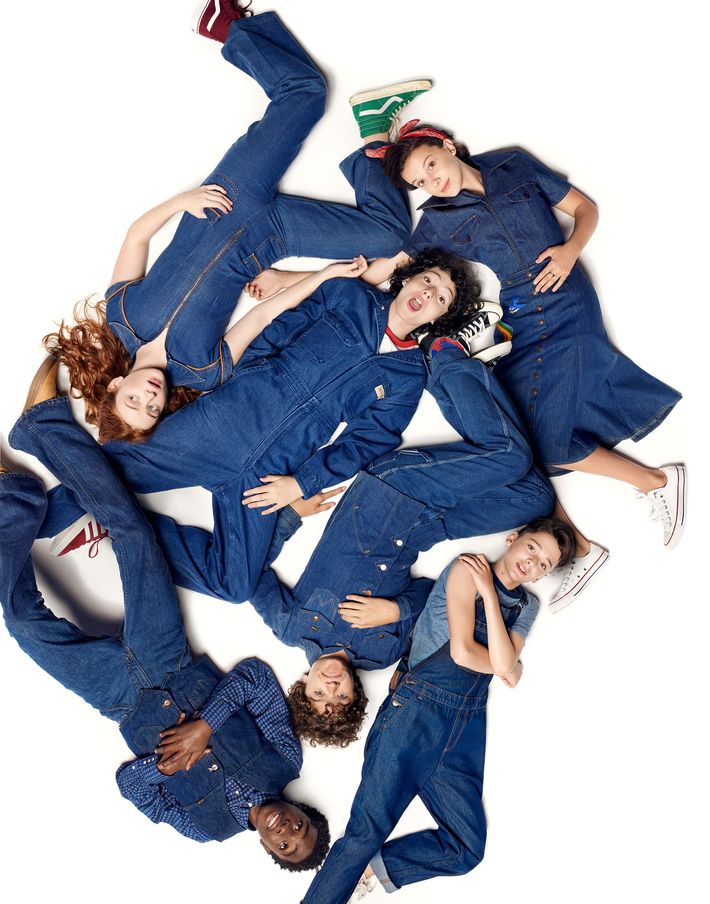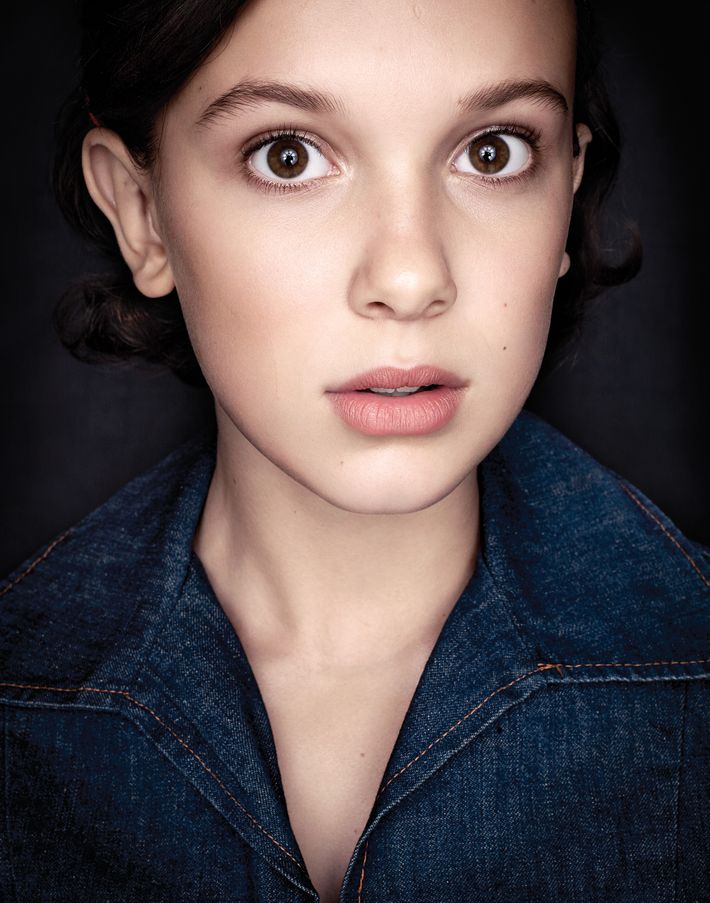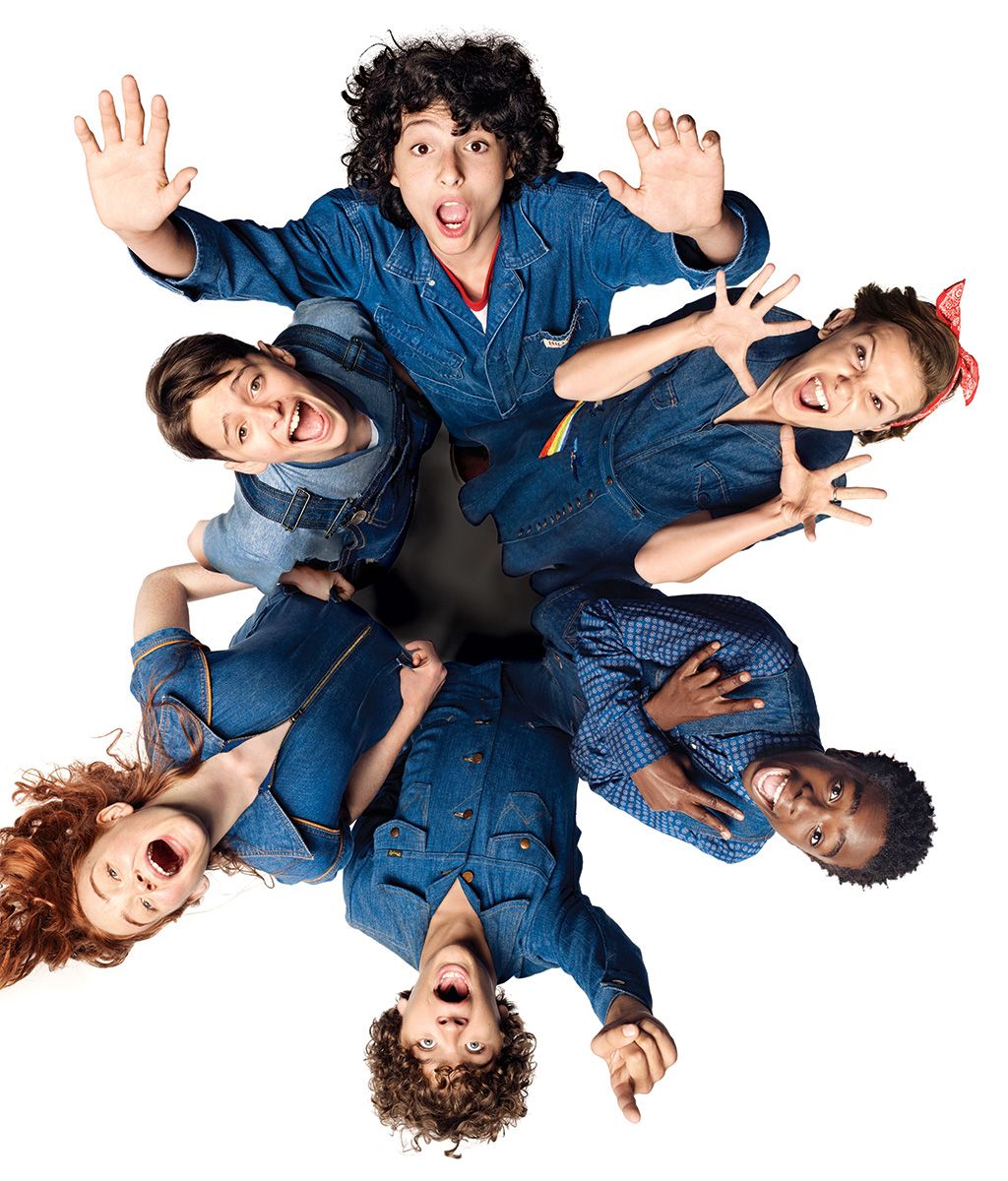Let me tell you the story of a pair of twin brothers who, not long out of college, wrote a screenplay for a horror film that prompted such a bidding war that they were able to persuade its eventual buyer, Warner Bros., to allow them to direct it — a film you probably haven’t heard of, and certainly haven’t seen, and that was dumped without even getting a theatrical release, and those twin brothers were never heard from again.
Except this isn’t that story.
Let me tell you the story of how M. Night Shyamalan read that screenplay and, attracted by its M. Night Shyamalan–y premise and structure, tracked down the twin brothers and hired them to work on his TV show, Wayward Pines. And how, emboldened by their experience, the brothers thought that maybe they, too, could create a TV show — so they came up with a concept that melded together all their myriad childhood obsessions yet could be encapsulated in one simple pitch: “What if Steven Spielberg directed a Stephen King book?” And they hooked up with some producers who encouraged them to downplay the whole Spielberg-King aspect of it and shopped that pitch to about a dozen TV executives, some of whom stared at them in disinterest and all of whom eventually passed on their idiosyncratic show.
Except this isn’t quite that story either.
Because the twin brothers then jettisoned the first producers and partnered with Shawn Levy, best known for the Night at the Museum franchise, and his production company, 21 Laps. They pitched their show to Netflix, which gave those twin brothers carte blanche to make the show they’d always envisioned: a mix of horror and adventure that starred a bunch of adorable preteen kids but also a terrifying monster, the whole thing soaked to saturation in a potent nostalgia for iconic ’80s pop culture. Netflix released that show in the summer of 2016 and, given the persistent deluge of streaming content, that show, while interesting, sank into obscurity.
Except this isn’t, of course, that story either. This is the story of Matt and Ross Duffer. Or, as they’re professionally known, the Duffer brothers, now age 33 and the latest in Hollywood’s esteemed lineage of branded-as-brothers filmmakers. (See also Coen, Duplass, Hughes, Farrelly, Russo, Safdie.) This is the story of the Duffers’ breakout show, Stranger Things, which debuted last year and quickly became Exhibit A for the kind of hit that both harks back to an age of office watercoolers yet could happen only at this very modern moment—a moment characterized by unfettered social-media chatter and short-season TV shows you can binge-watch in one manic, unhinged weekend.
The story of the Duffers is, like the plot of Stranger Things, an improbable yet engrossing and ultimately rousing tale, and there’s only one thing left to complete it, at least for now.
An encore.

Little Dom’s in Los Feliz is the sort of laid-back joint where you can arrive at 8 a.m. for a pancake breakfast and you might run into a genial but stressed-out-looking young man and his wife on the day of the first test-screening for his new film—and it turns out the young man is Creed director Ryan Coogler and the film is Marvel’s Black Panther. On a recent morning, pre–Coogler run-in, the Duffers, Matt and Ross, slid into a booth looking somewhat bleary-eyed, having, by their account, just arisen and facing down another day of racing to complete season two of Stranger Things, which debuts on October 27. At this point, it’s mostly finished. They’re editing and coloring episode seven of nine. Which might explain why they’re so passionate, even at this early hour, about a subject we’ve stumbled on: the settings on your TV.
“Us and everyone in Hollywood puts so much time and effort and money into getting things to look just right,” says Matt, “and when you see it in someone’s home, it looks like it was shot on an iPhone.”
“It’s shocking!” says Ross. “We were just at Comic-Con, and we walk on the main floor and the settings on every single TV is wrong. I was like, ‘Didn’t a bunch of nerds put this together? What is wrong with them?’ ”
“When I go to my friends’ places back home,” says Matt, “I’m constantly fixing their TVs.”
“But they don’t notice!” says Ross. “I’ll be like, ‘This looks like garbage,’ and I go into the settings and fix it for them, and they’re like, ‘It doesn’t look any different.’ ”
“So,” I interject, now thinking about my own TV settings, which I’m sure I haven’t touched since the day my set came out of the box: “What are the proper settings?”
“The key thing is to turn off anything that says ‘motion,’ ” says Matt. “ ‘TruMotion.’ ‘Smooth motion.’ ” He spits out these words like they’re epithets.
I’m not entirely unconvinced that, if they had the time, the Duffers would be willing to travel the United States in a rickety school bus, fixing the nation’s TV settings one household at a time. The settings issue also illustrates the peculiar position the Duffers are in. “Smooth motion” is not an issue that their idol, Steven Spielberg, ever had to worry about. But since TV is the new cinema, or something like that, the new cinematic auteurs — people like the Duffers — have to worry about not only your TV but the individual TVs of a few million people just like you.
For those novitiates who somehow missed the Stranger Things phenomenon of last summer, here’s a recap: The first season of the show follows a gang of young kids living in Indiana in the early ’80s, one of whom mysteriously disappears. There’s a shadowy research facility, a creepy scientist, a runaway girl with a weird name (Eleven) and special abilities (telekinesis, for starters), a washed-up town sheriff, and a lot of ominously flickering Christmas lights. Stranger Things first appeared on Netflix on July 15, 2016, and its arrival was heralded by little more than an aggressively retro, ’80s-style promotion poster, referencing the presence of Winona Ryder, and a title font that recalled the tattered paperbacks of Stephen King like Firestarter and Pet Sematary that once colonized dime-store carousels. And if you think the Duffers are invested in your TV settings, you should ask them about title fonts.
“There was this guy, Richard Greenberg, who did the titles for Altered States and The Untouchables,” says Matt. “He did this amazing shit with fonts.”
“Which were simple but supereffective, like Alien—” says Ross.
“He did Alien too,” says Matt.
“—Just using the letters of the title. I remember talking to Imaginary Forces, who did the title sequence for our show, and they geeked out.”
Suffice it to say, the Stranger Things title sequence became a meme all on its own. For a time last summer, the show was all anyone was talking about: those kids, and Eleven, and that adorably weird redheaded girl named Barb. Beyond that, there was the feel of the show itself. Stranger Things certainly isn’t a parody of resilient ’80s pop culture like John Carpenter and Spielberg, and it’s not even really an homage. It’s more like a genetic recombination; less a show that’s nostalgic for ’80s pop culture than a show that is a nostalgic reimagining of ’80s pop culture. Happy Days, by contrast, was a 1970s show born of nostalgia for the ’50s, but it didn’t try to replicate the experience of watching a show in the 1950s. The canny advance of Stranger Things lies in how it acknowledges the ways that, in the age of the internet, different eras collide, even as it recombines iconic sounds, images, and visual references to create a modernized version of a cultural experience that is all but lost. And all of it is thanks to two twin brothers who spent the ’80s and ’90s glued to their VCR, watching and rewatching their favorite movies, who are now committed to re-creating that feeling for you.

To truly understand how the Duffers got to Stranger Things, you need to watch their first movie, Hidden, from 2015. It’s not hard to find—I rented it on iTunes—but when I mention it, Ross says, “So you’re one of three people who’ve seen it.”
Before Hidden, Ross and Matt, who were born and raised in North Carolina, were 27-year-old graduates of Chapman University with a long history — stretching back to second grade — of making homemade movies and a short history of trying to break into Hollywood. Then they sold Hidden to Warner Bros. Hidden is a satisfying and tense puzzle box of a movie about a family tucked away in a bomb shelter for reasons that only slowly come to light. Once they sold the script and were hired to direct it, the Duffers’ future in Hollywood seemed assured. Then, suddenly, it was unassured.
“I started to get worried about three weeks in,” says Ross. “We got a call from an executive, and he goes, ‘Wait — the whole thing is in a bomb shelter?’ ”
A later regime change at the studio didn’t help matters, and eventually the film became an afterthought for everyone but the Duffers themselves. It would certainly make sense now for Netflix, that industrial trawler of content, to acquire Hidden, if only to strengthen its in-house Duffers brand. Apparently, Netflix is trying. “But Warner Bros. is determined no one can ever see it,” Matt jokes.
At the time, Hidden felt to the Duffers like they’d gotten their big break — and blown it. “You’re banging on the door for years, and they finally let you in the party,” says Matt. “And then they’re like, ‘That was an accident. You don’t actually belong here. Get the fuck out.’ Your dreams come true, and then they don’t.” It’s an elegant phrase that might have been their career epitaph if Shyamalan had not intervened with an offer to write for Wayward Pines.
“We were big fans of his,” says Ross.
“We wrote this Shyamalan-esque movie and then he read the script and said, ‘I like it!’ ” says Matt.
“And we were like, ‘No shit, man! We were trying to imitate you!’ ”
After one season of writing for Pines, the Duffers were ready to pitch something new. But this time, they were determined to do exactly what they wanted to do. “When we were selling the show, we made a look book that we designed to look like an old Stephen King book,” says Matt. “We did a fake trailer, too, which I think is kind of cheesy, but everyone was like, ‘You should really do it.’ We were putting John Carpenter music over shots from E.T. and seeing how it worked. That’s where we developed the tone of the show.”
Shawn Levy recalls when his executive vice-president Dan Cohen first brought him the pilot script. “He said, ‘It’s by these twin brothers no one’s ever heard of. And it may be the best pilot I’ve ever read.’ ”
Now, with the show’s success, the Duffers find themselves on the other end of the equation — getting spec scripts from writers that they find strangely appealing, until they realize why: The writers are trying to imitate the Duffer brothers.
“At the end of the day, Hidden was a great experience,” says Ross. “Because we know what it’s like to fail. And we know it will happen again.”

As for season two, which centers on Will, the boy who disappeared into the alternate dimension know as the Upside Down, and the repercussions of his return, all they’ll reveal is that “we wanted to push things a bit,” says Ross. “I told Matt, ‘I don’t want to call it season two, I just want it to feel like a movie sequel.’ If you have a successful movie, No. 2 is always a little bit bigger.” They do confirm there will be a season three and, in all likelihood, one more beyond that. “We’re thinking it will be a four-season thing and then out,” says Ross. By then, the original band of adorable preteens will be ready for college. “We just have to keep adjusting the story,” says Matt. “Though I don’t know if we can justify something bad happening to them once a year.”
“They’re going to have to get the fuck out of this town!” says Ross. “It’s ridiculous!”
As to their own futures, the Duffers have a few notions but, Matt says, not entirely convincingly, “we’ve realized we’re really bad at multitasking.”
“We’ve been talking to people like Joe Russo [of the Russo brothers], who’s, like, taking over the world while also making the biggest movie of all time [Avengers: Infinity War],” says Ross.
“It made me feel really bad about myself,” says Matt.
“And then the fans online are like, ‘What’s taking so long!’ ” says Ross. “But there’s a handcrafted quality to Stranger Things. We’re a little controlling.”
They do have an idea for a sci-fi blockbuster that would be “tonally very different,” says Ross. “But that’s way, way off.”
“I think the goal right now is to focus on elevated genre with a focus on characters,” says Matt. “And no more kids on bikes.”
Styling by Rebecca Ramsey; Prop Styling by Rob Strauss; Grooming by Heather Schnell for Exclusive Artists using CHANEL Les Beiges; Hair for Brown by Blake Erik at Statement Artists; Makeup for Brown by Nina Park at The Wall Group. Body-Double Casting by Impossible Casting.
*This article appears in the August 21, 2017, issue of New York Magazine.



